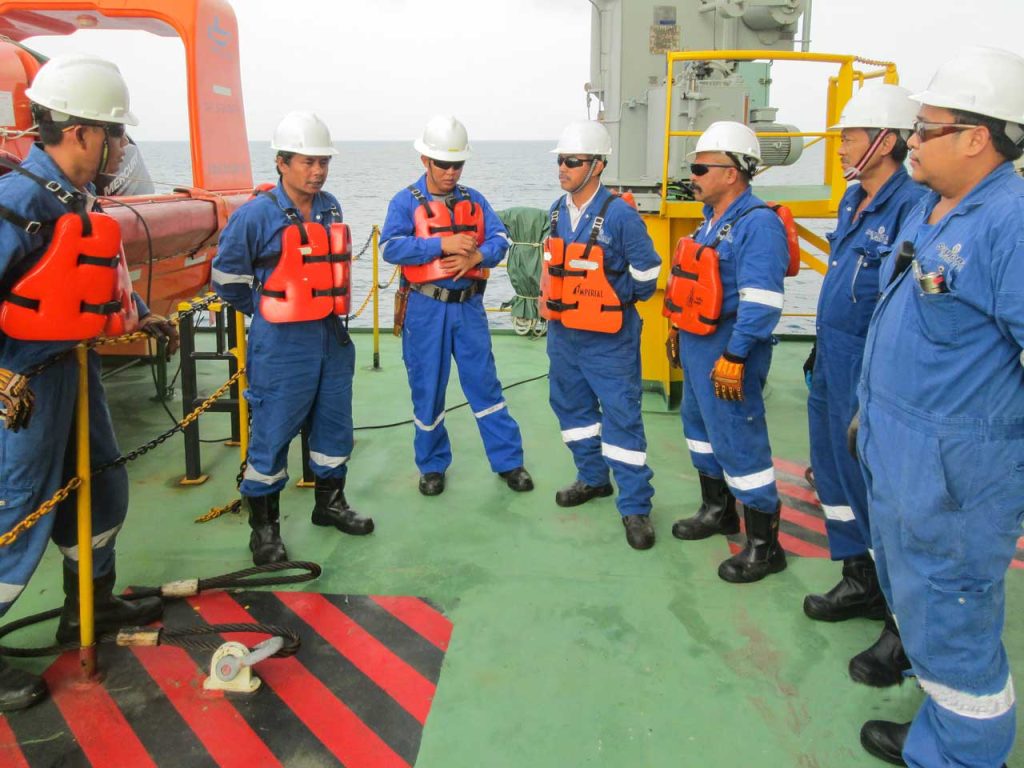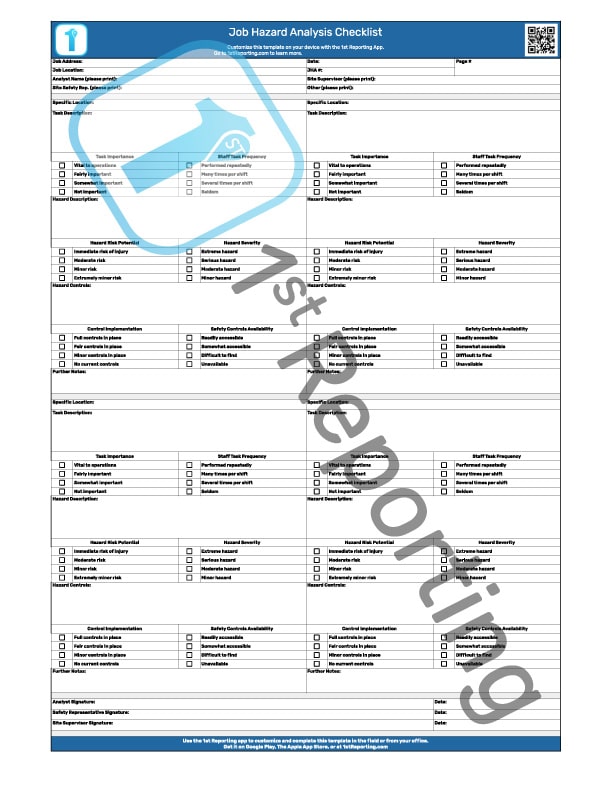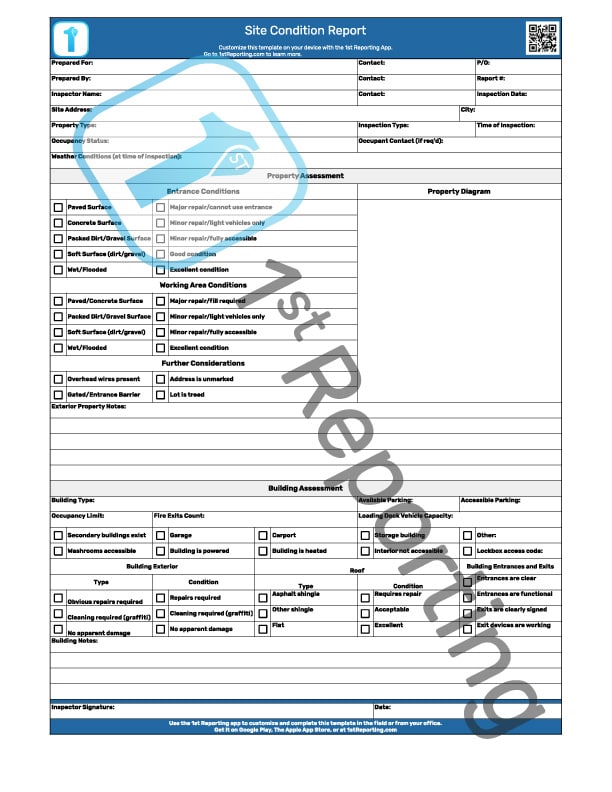Updated November 14, 2023.
You and I know safety is no joke at any workplace. That’s why having an organized list of toolbox talk topics is essential to an effective safety program. It’s also crucial for protecting workers’ safety while lowering company risk exposure.
We’ve compiled a list of toolbox talk topics for your safety program. The list comprises safety topics commonly addressed and includes topics to support the mitigation of the most prevalent accident and injury types.
Construction sites have a multitude of potential hazards. All we can do to mitigate the dangers is provide the best possible training for staff. This training prepares staff for potentially hazardous situations and allows staff to take preventive measures to neutralize threats to health and safety.
The List – Your Help To Toolbox Talk Strategy
Jump right to the list to build your Toolbox Talk calendar for the year.
We’ve examined the figures and statistics and researched in depth what OSHA and other governments and organizations deem minimum safety standards. Then, we went one step further to create this inclusive list with everything you need to align your toolbox talk (construction safety meeting topics).
The list is broken into seven categories, which you’ll see following this statement, with explanations and tips to follow.
- Accident Prevention
- Vehicles And Equipment
- Working At Heights
- Summertime Topics
- Human Injury
- Material Handling
- Winter Topics
Accident Prevention
The first and foremost essential, if not critical, aspect of any toolbox talk strategy is to prevent injuries to people. The accident prevention section of our list intends to do just that – by aiding you with topics that drive personal safety and a safety-oriented culture amongst your staff.
According to the Bureau of Labor Statistics (BLS), in 2019, the private construction industry fatalities increased to a whopping 1,061 deaths. That’s 1,061 reasons to increase your site staff safety awareness.
Vehicles And Equipment
On any construction site, there are always several different forms of vehicles and equipment. We’ve seen everything from dump trucks to concrete mixers to telehandlers and mobile cranes. The point is that there could be any number of different types of vehicles and, or equipment, each carrying its own dangers.
Did you know that most fatalities in road construction involve a worker being struck by construction equipment or other vehicles? According to OSHA, a worker in road construction is likely to get hit by equipment or vehicles within the work zone as they are to be hit by a passing vehicle.
The statistics are startling, and they mean one thing is inescapably clear: more work needs to be done to increase worker safety on construction sites with equipment (and on everything else, for that matter).
Like many other hazards at the construction site, vehicles and equipment are a significant source of hazards. For this reason, it is imperative to include vehicle safety awareness in your construction safety meeting topics agenda.
Working At Heights
In 2019, there were 711 deaths from falls to a lower level (according to the National Safety Council). That’s an awful lot of preventable deaths, but to be clear, that was not only in construction, but 401 of them were in the industry. That’s why it’s crucial to train staff to comply with all minimum safety standards, at the very least.
If your staff works at heights, these are topics that you must consider repeating at least twice throughout the work year. After all, the best staff are those who are alive, safe, and working instead of attending funerals for their coworkers or worse.
Falls account for the leading cause of death, according to the CDC. They stated that out of the 991 construction fatalities in 2019, 401 fell to a lower level.
Due to the dangers posed by working at heights, you should strongly consider repeating toolbox talks on the subject within your construction safety meeting topics program.
Summertime Topics
Depending on where your business operates, you may experience hot, summertime conditions. Two things can happen in hot weather: first, people become forgetful, which means safety is at stake. Second, people working outside doing physical labor tend to forget about sunstroke, heatstroke, and sunburn.
Trailing deaths from working at heights, according to the CDC, each year, about 658 people succumb to extreme heat. These numbers may not reflect those working on construction sites. However, it makes a good point all the same. These are preventable deaths.
That means that many people weren’t paying enough attention and died. A quick toolbox talk on the dangers of heat exhaustion and similar topics should help prevent these sorts of tragedies within your workforce.
Human Injury
Injuries to workers on the job site don’t only occur from falls. In 2019, there were 170 deaths in construction due to being struck by an object. That could be caused by objects that fell, were suspended, were moving on material handling equipment, or even those sticking out the back end of a truck.
There are many ways that workers can face injury on the job site, again proving that workplace safety is paramount, as is the repeated training and refreshers of a robust toolbox talk program.
Material Handling
Material handling on construction job sites is often considered an afterthought rather than a source of hazard. However, construction materials are often found improperly stacked and stored, causing hazardous situations.
You should not discredit material handling from your year’s construction safety meeting topics schedule. Too many workers are injured yearly from material handling, and refresher training can only help your construction safety meeting topics plan for better health and safety in the construction workplace.
One of the most common injuries in multiple workforces is strains and pulls. Anyone with a bad back will tell you that a pulled back can happen in an instant and take months, sometimes even years, to heal properly. Avoiding these sorts of strains when material handling is essential to preserving the health of your hardest-working laborers.
Winter Topics
Winter is a time of warm drinks by the first, holidays, New Year, and dreadfully cold and dreary weather conditions. If your staff is working in winter, then you know that their safety depends on how bad those elements batter down upon your construction site. And how well your staff is prepared for those conditions plays a huge role in their health and safety at work.
It isn’t just the bitter cold and its dangers that pose a threat in winter. Ice is a significant problem in many places during winter, and vehicles or heavy equipment often get themselves tangled up in the havoc that ice can wreak. If ice and snow are present, all the more reason to keep your staff well-informed of the dangers, both predominant and hidden, that winter weather conditions pose.
Planning Your Toolbox Talks For The Year
One of the best things you can do is organize your toolbox talks to reflect your construction sites’ hazards. The list we have compiled considers all the usual suspects for near misses or hazardous situations; however, it is not fully comprehensive.
Due to inconsistencies between job sites and equipment or conditions, we recommend that you adapt the list of topics we have provided to suit your individual needs.
According to the latest figures from the US Bureau of Labor Statistics, 5190 total fatal injuries occurred in 2021, and just over 2.8 million recordable nonfatal injuries and illnesses (in private industry) occurred in 2022. Given these figures, we recommend creating a strong safety program that includes a tactical and strategic approach to prevention and an appropriate topic calendar suited for your industry.
Many topics deserve multiple toolbox talks in a year, depending on the type of work your staff is involved with daily. For example, if your staff is consistently working at heights, it would be warranted to repeat several toolbox talks on the subject, perhaps twice or even more, per year.
Consider the dangers within your industry that your staff face every day and consider including those topics more frequently than other topics that may not be nearly as relevant to your business situation.
Ensure your team completes a Risk Assessment Form prior to commencing work. It’s not a bad idea to add a ‘how-to’ topic day where you go over appropriate safety documents to ensure all of your team knows how to record things like near misses. Again, a strong approach to safety is recommended.
Now that you’ve had some things to consider regarding your strategy for planning your toolbox talks, please consider the following list of potential topics for your toolbox strategy.
50 Toolbox Talk Topics Perfect For Toolbox Talks At Your Company

- Accident Prevention
- Avoiding Accidents
- Safety Glasses, Hardhats, And Hearing Protection
- Safety Gloves, Boots, And Reflective Clothing
- Respirator Use
- Fire Extinguishers
- Emergency Evacuation Procedures
- Understanding GHS And WHMIS
- Signs, Pylons, And Other Safety Markers
- Working In a Confined Space
- Excavations Dangers
- Vehicles And Equipment
- Vehicle Accident Prevention And Procedures
- Choosing The Right Tool For The Job
- Backing Up Vehicles And Equipment
- Refueling Safety – Propane
- Compressed Gas Cylinders
- Batteries And Chargers
- Power Tools Safety
- Hand Tools Safety
- Heavy Equipment Hazards
- Vehicle Spotting And Signalling
- Working At Heights
- Scaffold Safety
- Harnesses And Fall Protection
- Scissor Lifts And Aerial Boom Safety
- Mobile Cranes And Power Lines
- Ladder Safety
- Hoisting And Rigging Safety
- Working Around Cranes
- Overhead Dangers
- Forklifts, Telehandlers, And Lifting Loads
- Fall Arrest Vs. Fall Restraint
- Summertime Topics
- Understanding Heat Exhaustion
- Water
- Rapid Temperature Change: Dangers And Preparation
- Rain, Weather, And Working Outdoors
- Understanding Sunburn And Sunstroke
- Human Injury
- Injury Procedures
- Chemical Accident Avoidance
- Bending And Lifting
- Overexertion And Knowing When To Stop
- Slips, Trips, And Falls
- Material Handling
- Proper Lifting Techniques
- Stacking And Storage
- Marking And Signing Materials For Safety
- Handling Dangerous Loads
- Transporting Dangerous Loads
- Winter Topics
- Below Zero Worker General Safety
- Sub-Zero PPE Use
- Understanding Hypothermia And Frostbite
- Ice: Slips And Falls Prevention
- Operating Equipment In Winter Conditions
Digital Solutions For Toolbox Sign-Offs, Safety Audits, And More
Running a department or a job site is no easy task. That’s why a little pre-planning can go a long way. And using a digital solution for that planning and reporting is one way to optimize the process.
For example, utilizing a digital signature template that staff sign after each toolbox talk helps you keep a record of who acknowledges the provided training and awareness safety program topic. Using a tablet or even a smartphone for your sign-off sheet keeps the files organized digitally and keeps the paper at bay; you know how well paper survives rugged construction site conditions.
Aside from using a digital reporting solution for your sign-offs, vehicle inspections, site inspections, incident reports, or any other conceivable report, audit, checklist, or other forms, you can use it to set custom notifications as well. So, when your staff has an accident, you have a digital reporting system in place. You can receive an instant notification informing you of the incident or injury report your staff has completed.
One of the other great things about a customizable reporting solution is your ability to streamline and digitize the documentation of particular processes.
For example, let’s say your staff struggles with following the proper procedure for injury reporting. With a generic template as your starting point, you can work with 1st Reporting to set up a custom procedural template that specifies the steps your staff needs to take to complete a particular process successfully.
Using a reporting and notification app, especially one that is mobile-friendly and cloud-based, for your process automation and reporting is one way to keep your staff following procedures and documenting those procedures digitally. With instant customized notifications, you can have a notification sent to the appropriate manager upon the staff’s completion of the process checklist document.
As you can well imagine, the sky is the limit for automating your processes. A digital solution isn’t just an incredible tool for your toolbox; it’s becoming essential for everyday business and reporting.
Find out how our solutions can impact your business efficiency and processes today at 1st Reporting.



